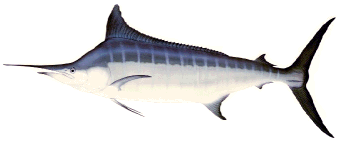 |
 |
 |
 |
 |
 |
 |
 |
 |
 |
 |
 |
 |
 |
 |
 |
 |
|
|
ECONOMIC BENEFITS OF HABITAT PROTECTION |
|
|
|
Creating an effective National Habitat Protection Program armed with competent and committed leadership, sufficient staff and funding, and the legislative authority to protect those habitats important to living marine resources would provide substantial net economic benefits to the nation.� It would provide the means to help fulfill the president's goal of achieving "No Net Loss of Wetlands" (a goal endorsed by President Clinton when a candidate) as well as to reduce current rates of habitat degradation due to pollution, alteration of freshwater flows, and other human-induced threats for the entire inshore area indicated on the cover map.� Once the national program is in full operation, for example, it is projected that current human-induced inshore habitat losses could potentially be reduced by 20,000 acres per year.� This would be accomplished by channeling necessary development away from important habitats, by minimizing the effects of future development, and by restoring habitats and watersheds to compensate for unavoidable losses and regain lost fishery productivity due to previous development.� Based on estimated annualized values of $10,000 per acre for commercial and recreational fisheries harvests provided by coastal wetlands (Bell 1989), such a fully functioning National Habitat Protection Program would annually maximize protection of critical wetland habitats (alone) worth up to $200 million to the public. |
|
|
|
Salmon and steelhead populations originating in the Columbia and Snake River Basins and in California's Central Valley have been reduced, by water resource development projects and extensive logging of coastal watersheds, to levels qualifying for listing as threatened and endangered species.� Significant public values could be regained through aggressive habitat protection, in addition to creating additional jobs for commercial fishing and other industries (e.g., forest products), by (a) managing freshwater flows from existing water projects (dams and diversions) to protect and rebuild populations of salmon and steelhead, and (b) undertaking a program of habitat restoration and protection in areas affected by logging, grazing, and agriculture.� With many West Coast anadromous populations at 1-10% of historic levels, certainly a doubling of existing stocks is achievable through improved habitat protection and water management under the direction of an empowered NMFS National Habitat Protection Program, and population restoration of 3-4 times the current depressed levels is not an unreasonable goal.� Restoring native salmon populations is also an appropriate means of revitalizing the economies of the region.� The Pacific Northwest's regional economy is water-built and waterborne;� it can not be sustained over time without healthy watersheds, which equates with healthy Pacific coast salmon populations. |
|
|
|
As habitats are effectively protected from inappropriate development and as previously affected habitats are healed, the nation will realize a reversal in the losses of inshore-dependent populations of living marine resources including fish, shellfish, marine mammals and endangered species dependent upon such habitats.� Aggressive habitat protection will provide habitat and water quality improvement, and thus increased populations of inshore-dependent species. |
|
|
|
Many and perhaps most inshore-dependent fish and shellfish species of the lower 48 states have been reduced by 75% to more than 95% of their historic levels.� If one assumes that inshore-dependent populations have been depressed to 20% on average, the potential maximum populations recoverable would be 5 times current values.� Clearly, not all lost habitat can be regained nor can all development be redirected to avoid additional ecosystem damage.� However, it is entirely reasonable to expect that inshore-dependent populations of living marine resources of the lower 48 states could be doubled as a result of improved habitat protection, including appropriate operation of water projects, improved agricultural practices, improved location of future development, prevention of pollution, and a variety of other measures.� |
|
|
|
If such an attainable goal were met, a doubling of current fisheries-related values could potentially produce:� (a) $1 billion per year at dockside to commercial fishing interests, $12 billion in economic activity to processors and related industries, and 250,000 additional jobs;� and (b) a doubling in marine recreational fishing (both in quantity and quality) currently generating $4.2 billion in earnings, $15 billion in economic activity and 286,000 jobs.� Thus, annual benefits would total $1 billion dockside to commercial fishermen, $27 billion in induced economic activity and 536,000 new jobs� -� all at a marginal cost of $46 million ($60-$13.7 million) to fully fund an effective National Habitat Protection Program. |
|
|
|
GO TO
Habitat Protection Division
Inshore-Dependent Fish and Shellfish
Dams and Flow Diversions
Wetlands
Toxic Contaminants
Nutrient Over-Enrichment
Cumulative Effects
References
Swordfish, Billfish, Tunas and Sharks
Chambers and Associates - Overview
Description of the Firm
List of Pages on this Website
Home |
|
|
 |
|
|
|
Chambers and Associates
9814 Kensington Parkway
Kensington, Maryland 20895
(T) (301) 949-3003�� (Fax) (301) 949-3003
Email�� [email protected]
Website�� www.Chambers-Associates.org |
|
|
|
|
|
Blue Marlin Logo by Ron Pittard |
|
|
|
|
